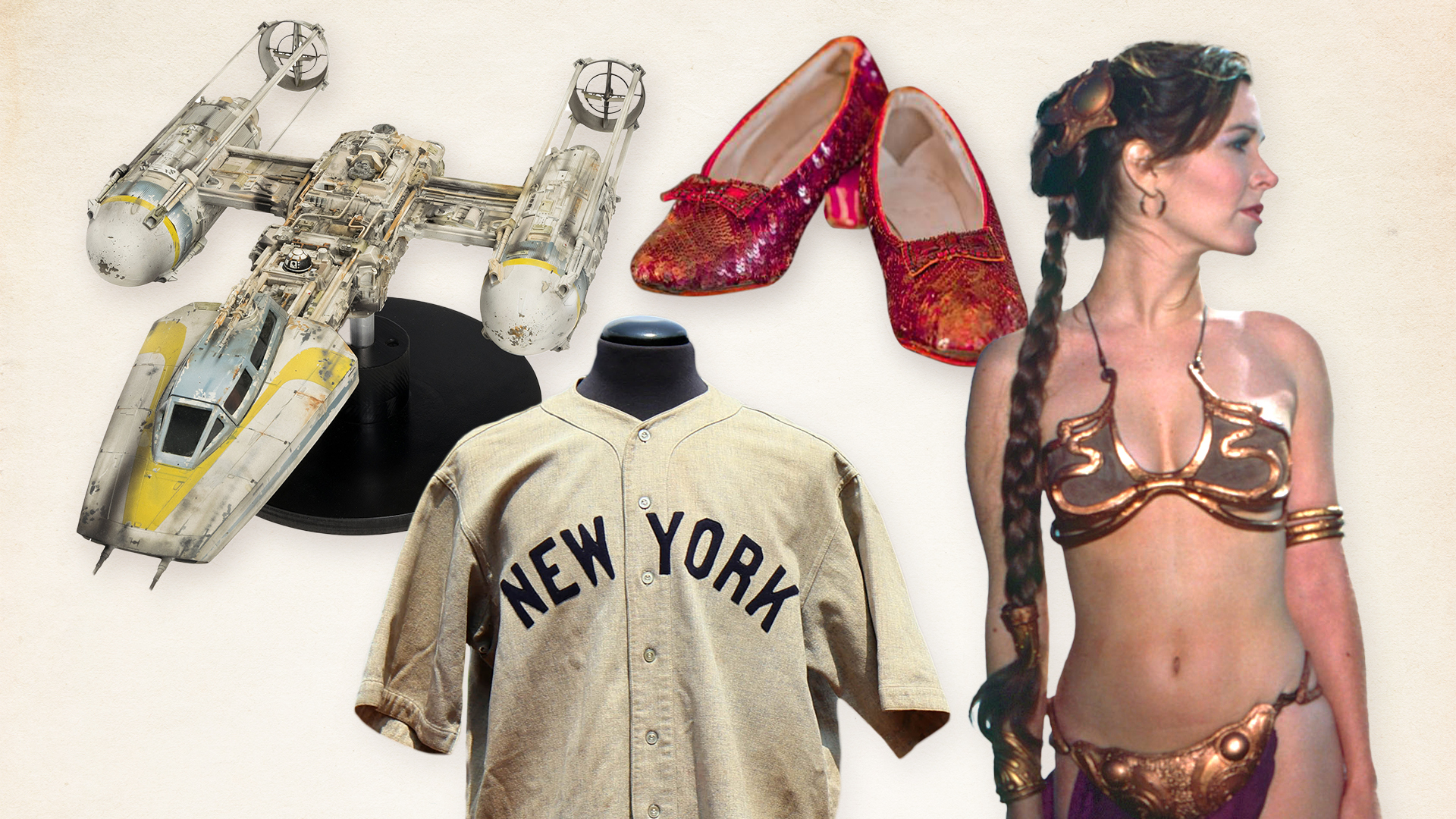
Simone Del Rosario:
How much is a piece of history worth? A lot, right?
What if that piece of history is a piece of one of the greatest legends in sports?
The jersey worn by Babe Ruth when he “called his shot” in the 1932 World Series is expected to fetch $30 Million when it the gavel pounds at Heritage Auctions the end of August.
Joe Maddalena:
“Babe Ruth is bigger than baseball. Babe Ruth was a cultural phenomenon, the way he lived his life, he died young.”
“My name is Joe Maddalena. I’m an executive vice president at heritage auctions here in Dallas. I’ve been doing this for 40 years.”
Simone Del Rosario:
The “called shot” happened in the fifth inning of Game 3 against the Chicago Cubs at Wrigley Field. While every kid has recreated the moment on the diamond, baseball historians are unclear whether he was pointing at the opposing pitcher, the Cubs’ dugout, or the fence.
Joe Maddalena:
“But I think, because he is baseball and whether this call shot is a myth or it actually was him pointing at the fence [where] he hit home run, [it] doesn’t matter. It’s the fact that you have probably the most important image in sports, in baseball history, for sure, of Ruth calling that shot. You have that tunic that you can match to that moment in time. It’s priceless.$10 million, $100 million.”
Simone Del Rosario:
The jersey last sold in 2005 for a paltry $940,000, by comparison.
Memorabilia and collectibles have been coveted items for decades, but it hit a fever pitch during the COVID-19 Pandemic.
Prices soared so much at the time, the “King of Collectibles” himself, Ken Goldin, called the rapid price increase an “irrational, unsustainable spike.”
He would know. Since then, we’ve seen those record values fall for collectibles like trading cards, watches, and even rare whiskeys and wines. But fall by how much?
Joe Maddalena:
“So pre-COVID, a Charizard, which is the greatest Pokemon card, let’s just say you had a PSA 10 Charizard. Perfect card, first Edition, that card, pre covid, was $15,000 to $18,000. [At] the height of covid, it was $400,000 now the card is about $250,000. If you compare $250,000 to pre-COVID, it’s still really, really good.”
“Actually trading cards is an area that I oversee, and we’re up 25% from last year. So I think it was just a Bounce for trading cards.”
Simone Del Rosario:
The overall collectibles market is still growing, according to research firm Market Decipher. They say it will cross $600 billion this year, gaining more than 9% over last year. They project the overall collectibles market will eclipse $1 trillion in the next decade.
Joe Maddalena:
“So many sports collectors are like, ‘gee, I’d like to diversify.’”
“Collecting movie props in a serious way, started in about 1970 and it’s been a pretty steady ride. We haven’t had a giant escalation in price. It’s been pretty healthy.”
Simone Del Rosario:
Heritage had a prototype of Princess Leia’s iconic gold bikini worn in Jabba the Hutt’s palace in 1983’s Return of the Jedi.
They just sold the piece for $175,000 at auction last week.
Joe Maddalena:
“Film is a cultural currency. You can go anywhere in the world and they know who Harry Potter is. You can go anywhere in the world and you can say ‘hasta la vista, baby.’ And they know that’s Arnold [Schwarzenegger]. Mickey Mantle, Joe DiMaggio, these are American pastime. It’s different. It’s not that one’s better than the other.”
The bikini is nothing short of iconic, continuing pop culture relevance throughout the past 40 years.
“OK, Here we go, I’m Jabba’s prisoner, and you…”
Simone Del Rosario:
Costume designers made a different version of the bikini for screen to make it more comfortable for Carrie Fisher.
But still, they didn’t do enough as she told NPR in November of 2016.
Carrie Fisher:
“It wasn’t my choice. When he showed me the outfit, I didn’t – I thought he was kidding, and it made me very nervous. And, you know, they wouldn’t let me – I had to sit very straight ’cause I couldn’t have lines in the side of – on my sides, you know, like a little crease. No creases were allowed. So I had to sit very, very rigid straight.”
Simone Del Rosario:
While the bikini may have demanded the most attention, it wasn’t even the Star Wars item that brought in the most dough during last week’s auction…
That honor goes to a Y-wing fighter model that was part of the trench run that eventually blew up the Death Star in A New Hope. It fetched $1.55 million.
The model sold was one used for close up shots, meaning it’s incredibly detailed.
Joe Maddalena:
“It’s another cultural phenomenon. Because these movies and TV shows use practical effects, not CGI, they actually use miniatures. They’re so coveted, because look at what we can do with CGI. But why do the movies with practical effects look so much better?”
Simone Del Rosario:
While Maddalena has had the pleasure of listing items from Star Wars to Dorothy’s Ruby Slippers from the Wizard of Oz – those go up in December – there are still items out there he’d love to get his hands on.
Joe Maddalena:
“The only thing I’ve never seen is Maria, the robot from Metropolis.If that exists, it’s possible. So in the movie, it gets destroyed in the fire. But I’m sure they made more than one. So that would be like to me, if that existed, that God knows what that would be worth.”
Simone Del Rosario:
Some collectors are going to try and squeeze all the money they can out of these items. Investing in collectibles can draw in greater returns than some of the best bull markets. But Maddalena says what makes the collectibles market is community.
Joe Maddalena:
“Search out people who are knowledgeable. Learn,and then the fun part about it is, no matter what you spend, the joy you get from it… That’s what this is all about. This is your hobby. Hobbies are healthy. They give you personal enjoyment, and sometimes they make money.”
“You meet amazing people you would never meet anywhere else. You form lifelong friendships with people who are so unlike you because you have something in common. And I think that’s the value of collecting.”











